Transition’s Repeater electric mountain bike is the North American brand’s first eMTB.
It’s based loosely on the Sentinel enduro bike and is designed to tackle the same type of enduro-focused gnarly riding.
Its 160mm of frame travel uses Transition’s Horst-link Giddy Up suspension system. Running a full 29in wheel setup, its Speed Balanced Geometry (SBG) is slack, long and low.
Although this NX build – named after SRAM’s NX groupset – is the most affordable in a three-model line-up, it uses the same carbon fibre frame, Shimano EP8 motor and 630Wh internal battery as the more expensive options.
The Repeater’s frame is offered with a lifetime warranty, like all of Transition’s bikes.
Transition Repeater NX Carbon frame, suspension and motor
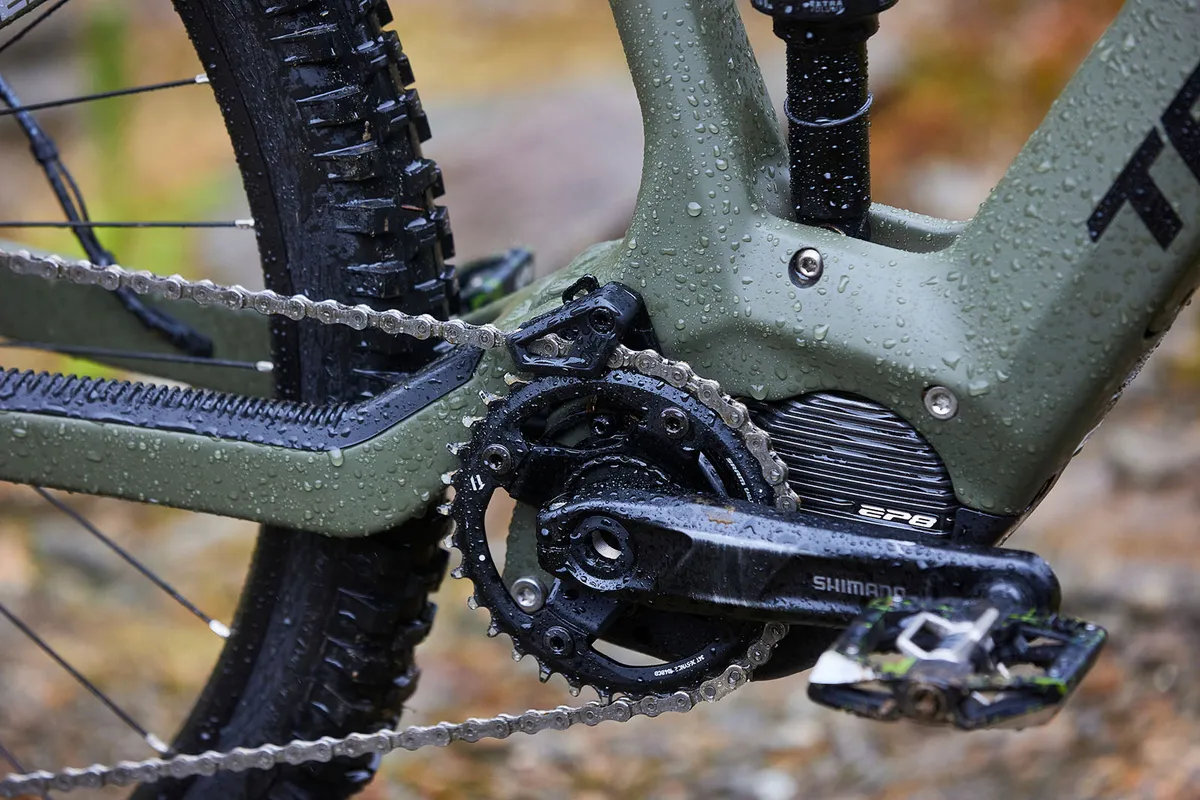
Made from Japanese Toray carbon fibre, the Repeater’s frame – including front and rear triangles and rocker link – is entirely carbon.
Cables are routed internally, entering the frame via the headset. A water bottle mount – with space for a 630ml bottle – is joined by an accessory mount on the underside of the top tube.
Chain-slap protection features on the drive-side chainstay. It is fitted with SRAM’s Universal Derailleur Hanger and uses standard Boost 148 rear-axle spacing.
Its pivots are fitted with Enduro Max bearings and additional bearing shields to protect them from water ingress.
According to Transition, the 160mm of Horst-link suspension has been tuned for both coil and air-sprung shocks, and can handle the extra weight of electric mountain bikes.
Shimano’s EP8 electric bike motor, 630Wh internal battery and full-colour SC-EM800 display are fitted.
Transition Repeater NX Carbon geometry
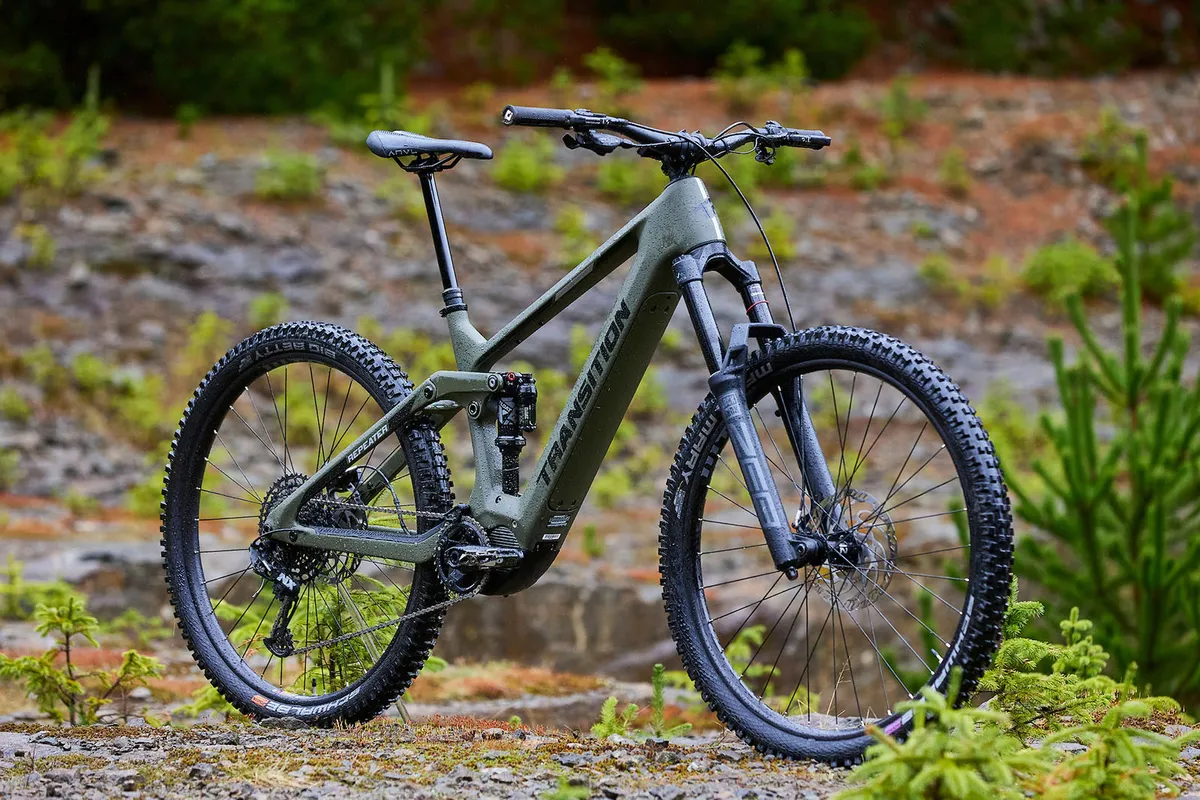
Transition's SBG geometry is intended to balance agility, grip, rider balance and stability in technical or fast terrain. It does this by combining a slack head tube angle with a short 44mm-offset fork, that’s now standard for most bikes with 29in wheels and forks.
It’s available in four sizes, from small to extra-large, with reach figures starting at 425mm and rising to 510mm.
Head angles are 64 degrees across the sizes, but effective seat tube angles start at 78.4 degrees (small) and slacken to 77.1 degrees (extra-large).
Each size’s chainstay length is 455mm, with the bottom bracket sitting 340mm above the ground.
None of these figures look out of place on an enduro-ready ebike, its geometry converging on an almost industry-wide sweet spot.
| | S | M | L | XL |
|---|---|---|---|---|
| Seat angle (degrees) | 78.4 | 77.9 | 77.4 | 77.1 |
| Head angle (degrees) | 64 | 64 | 64 | 64 |
| Chainstay (mm) | 455 | 455 | 455 | 455 |
| Seat tube (mm) | 375 | 400 | 440 | 470 |
| Top tube (mm) | 559 | 589 | 617 | 650 |
| Head tube (mm) | 110 | 110 | 120 | 130 |
| Fork offset (mm) | 44 | 44 | 44 | 44 |
| Bottom bracket drop (mm) | 30 | 30 | 30 | 30 |
| Bottom bracket height (mm) | 340 | 340 | 340 | 340 |
| Wheelbase (mm) | 1221 | 1251 | 1280 | 1315 |
| Standover (mm) | 705 | 715 | 720 | 725 |
| Stack (mm) | 630 | 631 | 640 | 649 |
| Reach (mm) | 425 | 455 | 480 | 510 |
Transition Repeater NX Carbon specifications
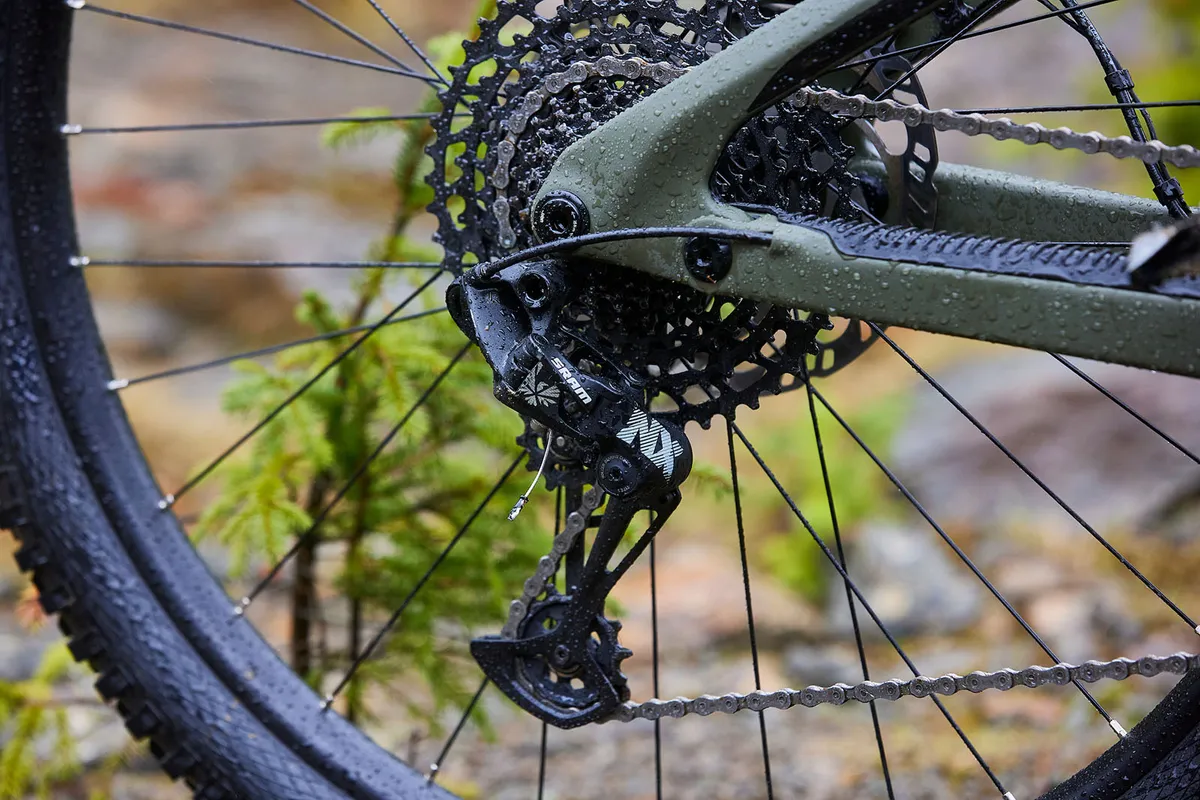
The most affordable Repeater is built with SRAM’s NX Eagle drivetrain, including the HG Driver 11-50t cassette rather than the wider-range 10-52 XD version.
Magura’s four-piston MT5 brakes are matched with 203mm rotors.
A RockShox ZEB R fork with rebound adjustment is usually fitted, but my test bike’s fork had a bushing issue and was replaced under warranty with a Charger 2.1 RC2 version. Fox’s Float X Performance rear shock is specced.
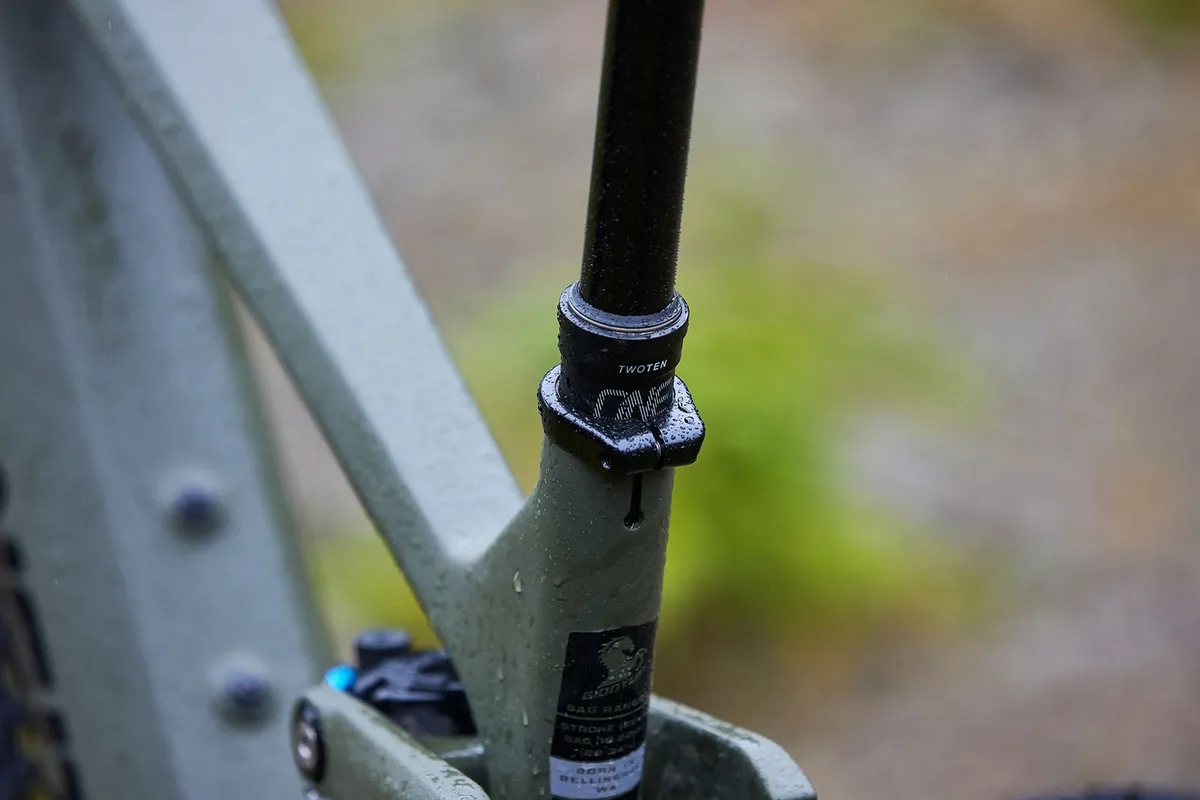
OneUp’s V2 dropper with 210mm travel (size large) and V2 remote are present. We also get Race Face Chester Alloy bars, an Aeffect R stem and ODI Elite Flow grips.
Stan’s Flow D rims are laced to Novatec hubs. These are wrapped in Schwalbe rubber, with a Magic Mary Super Gravity Addix Ultra Soft 29x2.4in front and Big Betty Super Gravity Addix Soft 29x2.4in rear.
This size-large test bike weighs 23.11kg without pedals.
Transition Repeater NX Carbon ride impressions
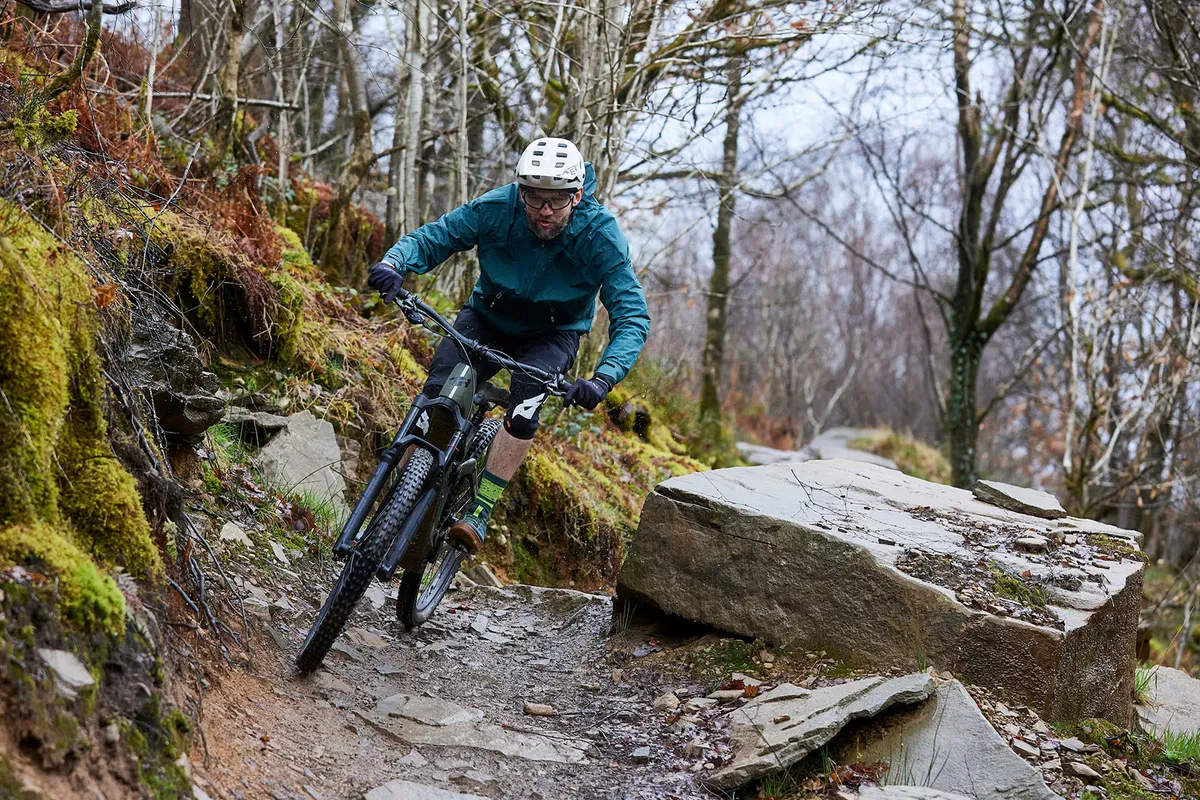
I tested the Transition Repeater NX Carbon in Scotland’s Tweed Valley, home to some of the UK’s most challenging, steep and technical enduro trails. During the long test period, weather conditions ranged from snow and ice to deluges and grippy hero dirt.
Setup
Using Transition’s online setup guide, I inflated the RockShox ZEB to 75psi and left the factory-installed two volume-reducer spacers in the air spring, giving 18.75 per cent sag. I set the external compression adjusters to fully open and set the rebound to taste. I left the forks set like this for the duration of the test period.
I inflated the rear shock to 165psi and left the factory fitted 0.7in cubed volume reducer spacer installed. This gave me 30.7 per cent sag, which is within Transition’s 28 to 34 per cent sag range. I set the rebound adjuster to fully open. Like the fork, I left these settings unchanged for the duration of the test period.
Transition Repeater NX Carbon climbing performance
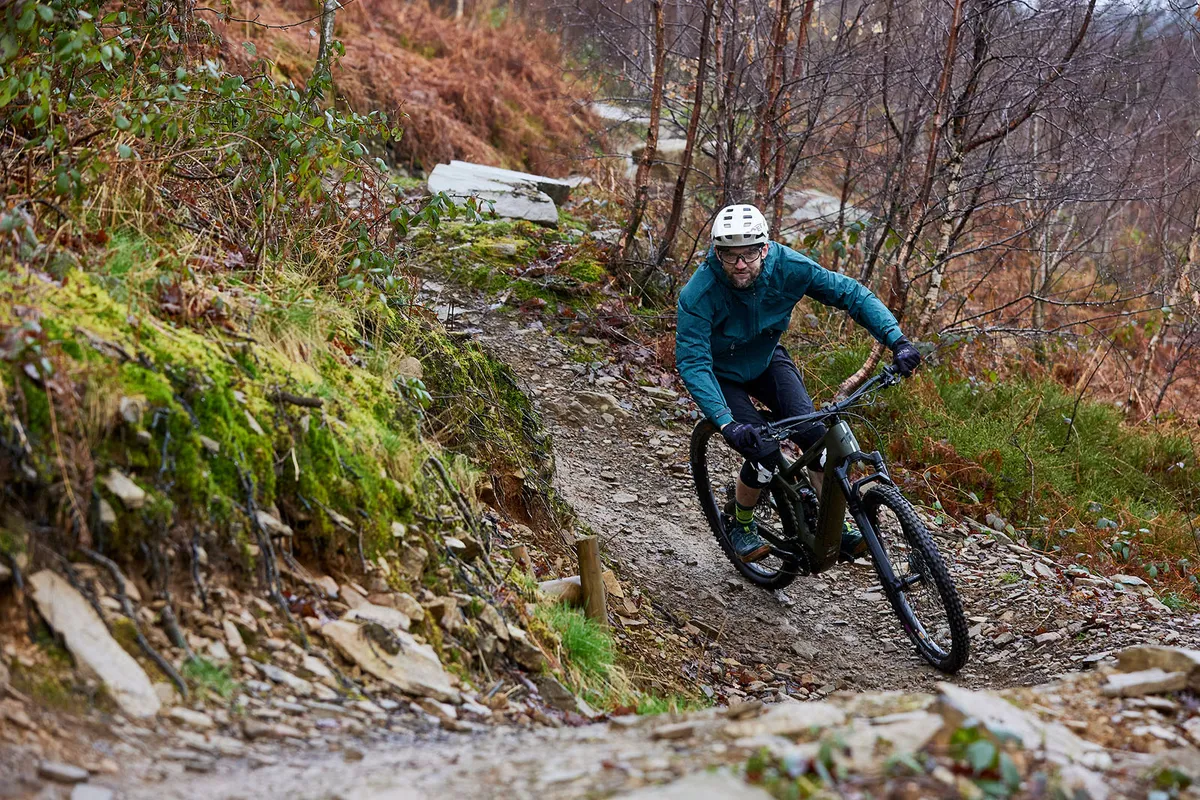
Uphill, the Repeater’s steep 77.4-degree seat tube angle gives it a dominant, comfortable and proficient climbing position, placing your hips directly above the bottom bracket.
Combined with the generous 455mm chainstays, the Transition’s seated pedalling position is centralised, helping improve traction and control.
Even on very steep climbs, the front wheel remains planted on the floor, only lifting when commanded to do so by the rider.
Rear-wheel traction is equally controlled; the bike’s balance means big shifts over the rear wheel axle aren’t needed to keep it from spinning.
The chunky Big Betty soft-compound tyre’s aggressive blocks dig into soft ground well, offering great traction. On harder surfaces, there’s fractionally less grip, but the rubber does well to stick to slick rocks and roots, maintaining the bike’s composure.
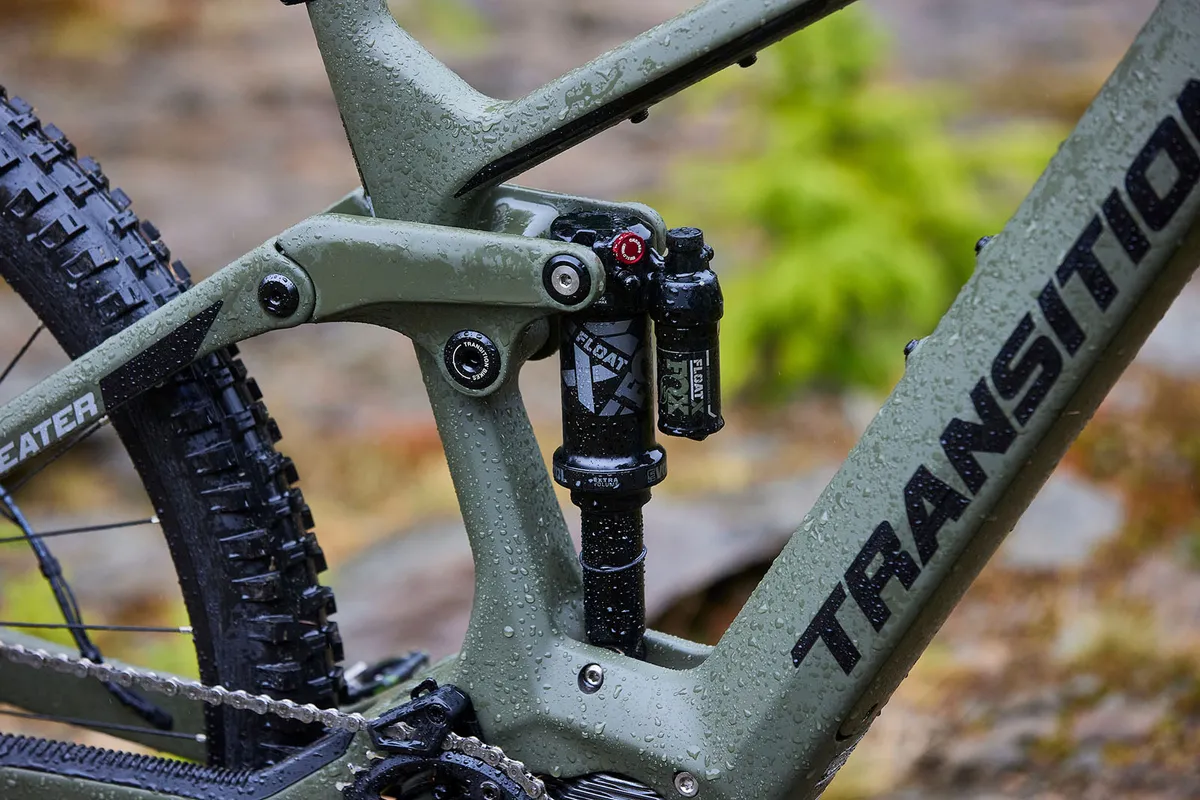
Its rear suspension is supple and forgiving. The shock moves in and out of its initial stroke well, insulating the rider from trail buzz as it tracks the trail’s undulations.
This adds to its traction; the rear wheel moves up and out the way of obstacles, giving the tyre uninterrupted contact with the trail’s surface.
The Repeater’s performance makes climbing great fun, where seemingly insurmountable ascents become a reality. It’s one of the best climbing ebikes on the market.
SRAM’s NX Eagle drivetrain’s functional performance is well suited to the rough and tumble rigours of ebiking. Shifts aren’t hugely refined, but the heavyweight cassette and chain feel as though they will resist the extra power electric bikes produce.
The shifter’s feel isn’t very crisp, however. The wide band clamp made mounting it for my preferences impossible. I couldn’t get the Magura brake lever and shifter set to my preferred positions. In the end, I mounted the shifter inboard of the brake lever, leaving its paddles just out of reach of my thumbs.
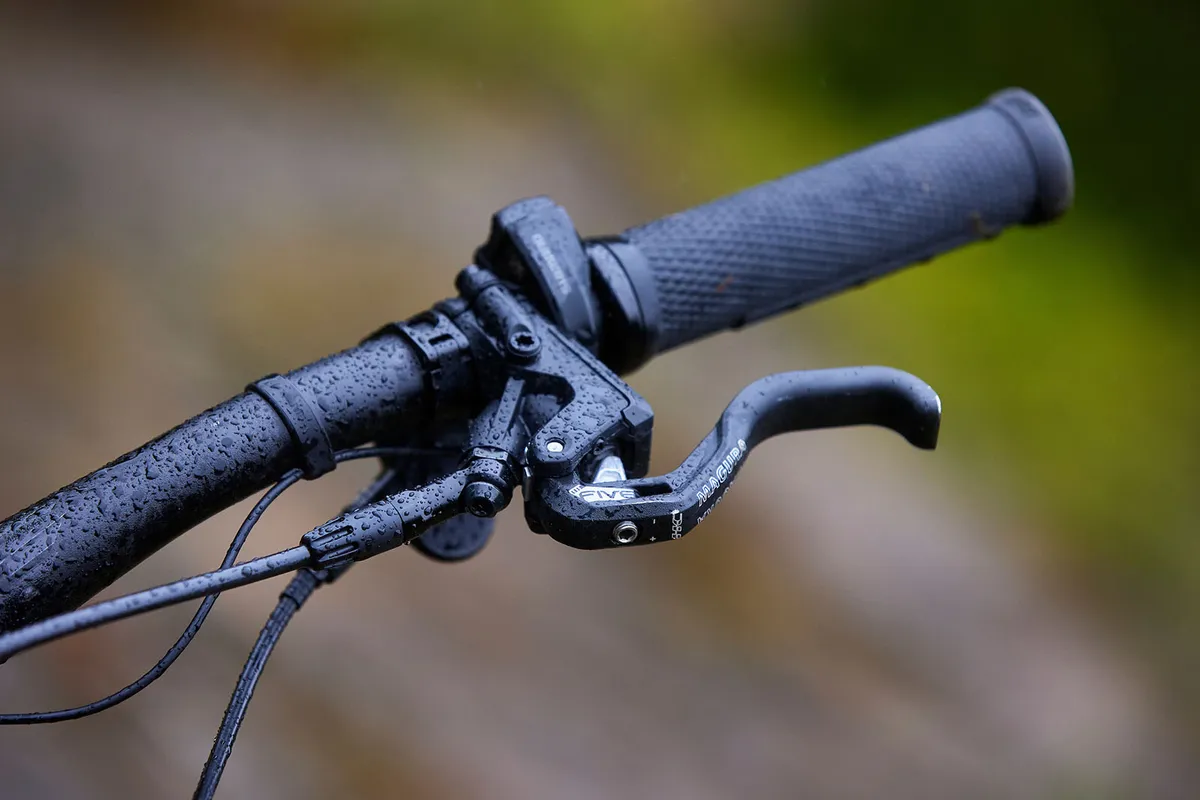
OneUp’s long 210mm-drop post provides plenty of travel, and the brand’s posts have an impeccable performance track record.
It’s also a noisy bike. The chunky carbon tubes augment any sounds emitted by the motor or other components. The rear shock added to this with a distinct top-out as it extended fully.
Although this didn’t affect performance, it was annoying.
Motor performance and battery life
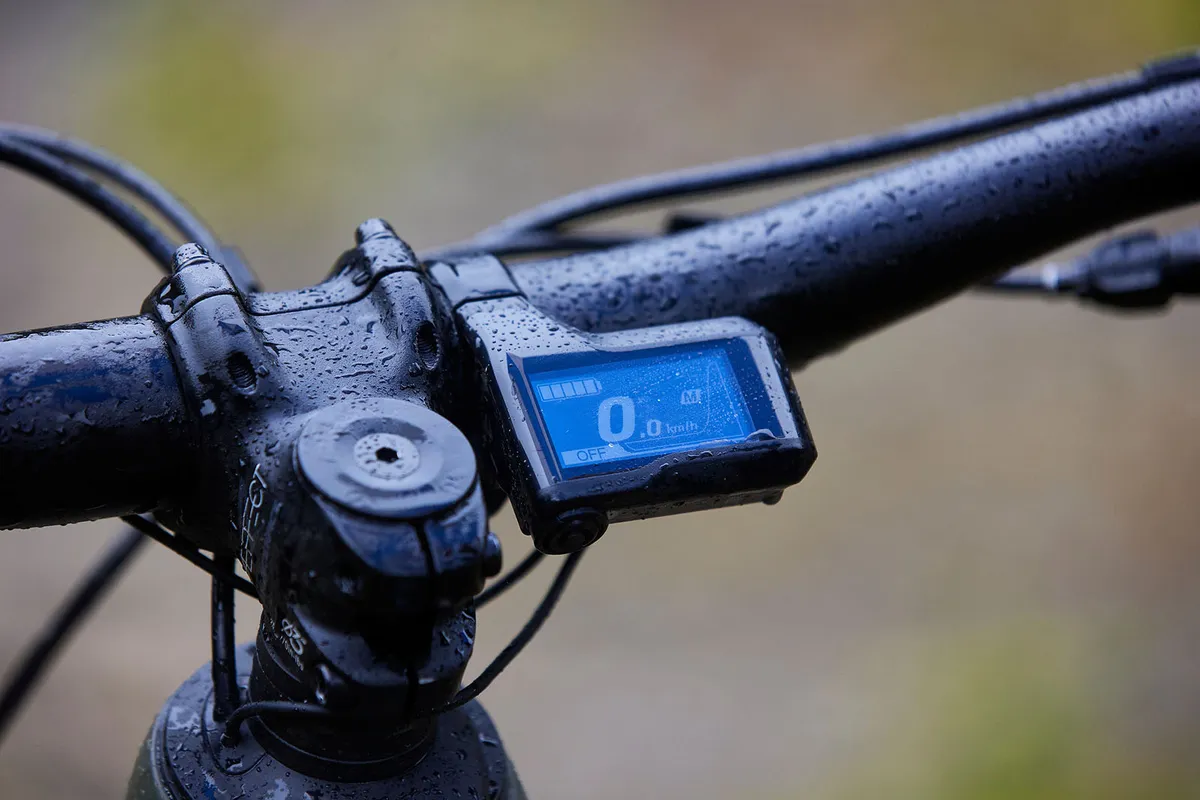
Set to Eco mode, Shimano’s EP8 motor and 630Wh battery combine to provide just over 2,000m of ascent on a single charge. In Trail, this drops to 1,400m-1,600m and reduces even further in Boost.
The EP8’s assistance feels natural where increasing your pedalling power and cadence decreases the motor’s perceived assistance. At lower cadences, assistance peaks. This is unlike Bosch’s Performance Line CX motor, which feels as though it matches rider input with assistance right up to its cut-off, regardless of cadence.
Which system you prefer will be down to how you expect or want an ebike to behave. Lovers of outright speed and power will prefer the Bosch, while people looking to put in a bit of extra effort themselves will prefer the Shimano.
Transition Repeater NX Carbon descending performance
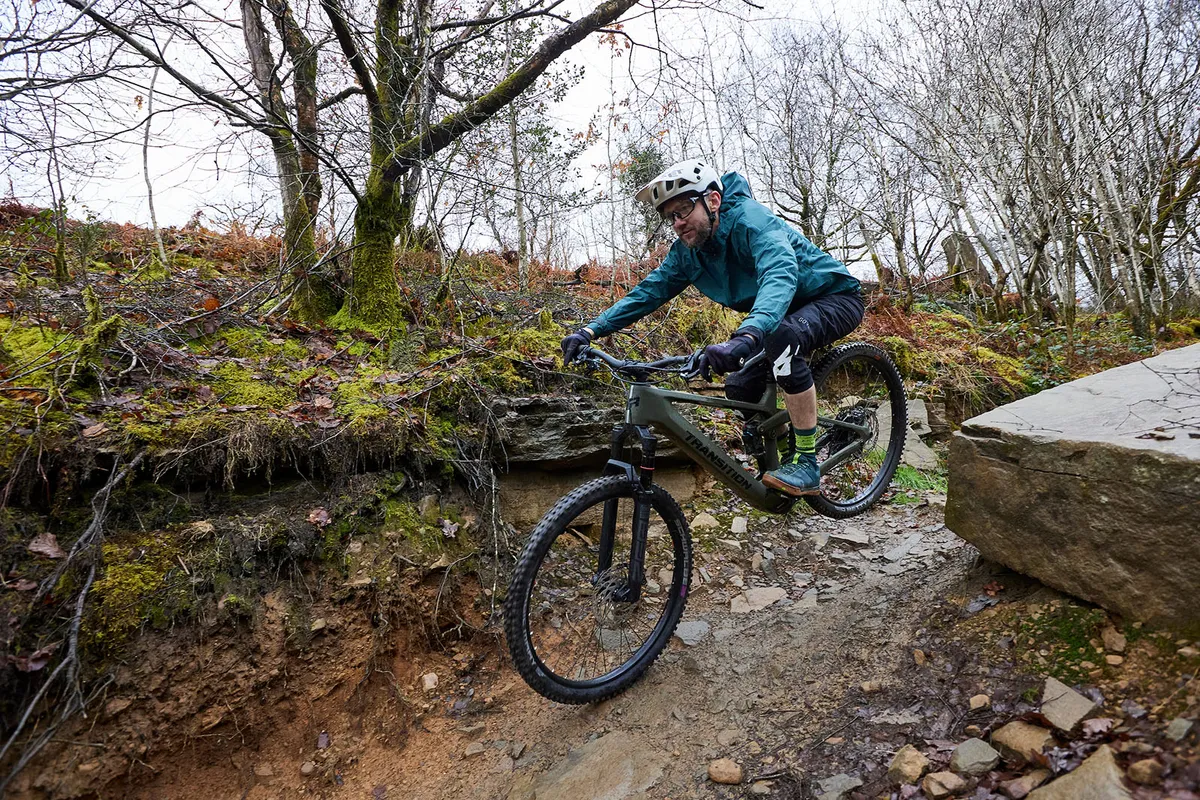
The Repeater’s gravity-focused geometry ticks all the right boxes to create a stability-focused ride.
The 480mm reach is slap bang in my sweet spot, combined with 29in wheels front and rear, and 455mm chainstays and a 1,280mm wheelbase. I expected the hand-to-feet relationship to feel neutral, roomy and balanced – and the bike to feel quite large.
Out on the trail, however, the Transition has a compact feel. The relationship between hand and feet is much closer than I was expecting, most likely caused by the low bottom bracket and plush fork.
This turned out to be a positive thing, however.
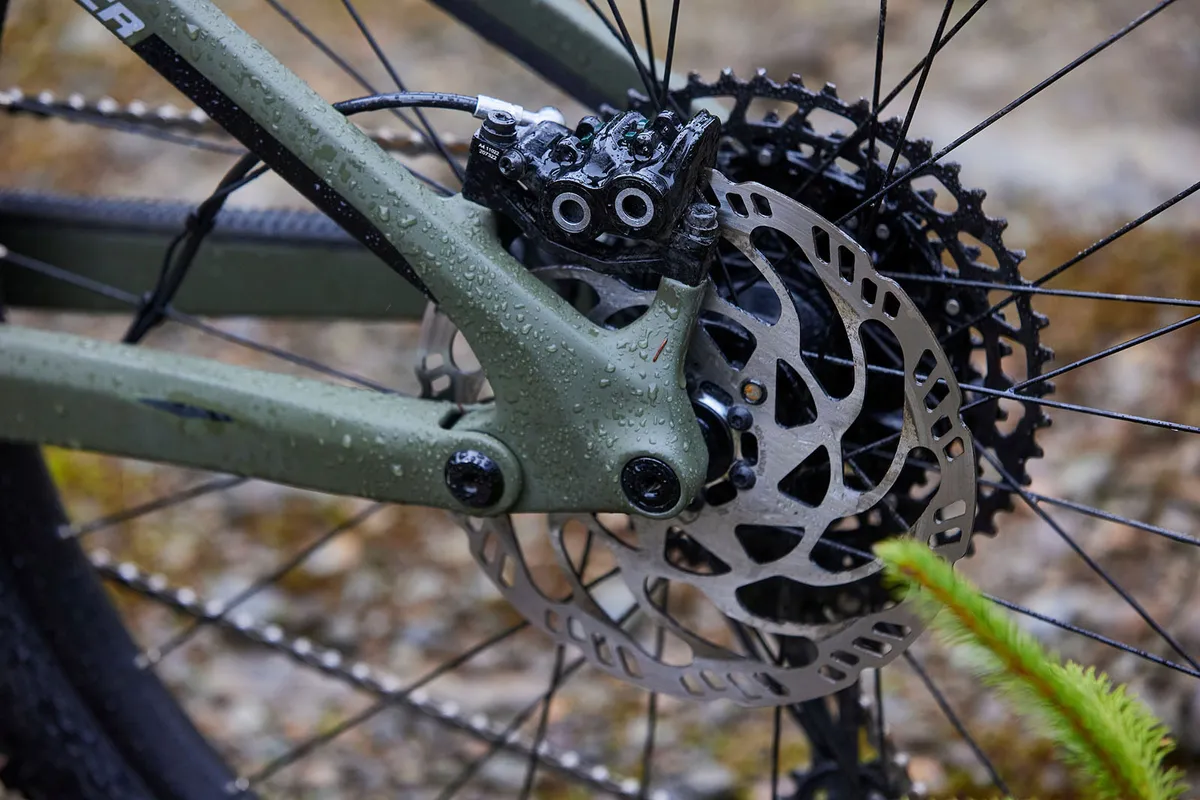
The Repeater felt manoeuvrable and responsive to rider inputs. Weight shifts had a larger effect on its line compared to other bikes with similar geometry figures.
Working it around sharper turns or tight, technical sections was exciting and rewarding; the frame’s quick responses equal the amount of effort you put in.
The low bottom bracket clearly helps by keeping your feet well below the wheels’ axles, lowering your centre of gravity.
Switching direction and transitioning between turns was predictable and easy; the bike seemed happy to swap from one edge of the tyre to another with little effort.
It also hooked confidently into turn radii, offering plenty of grip and balance. Neither the front or rear of the bike dips or sinks more than the other, sitting level with the horizon as you drive grip.
The supportive suspension creates that balance, providing plenty of mid-stroke support.
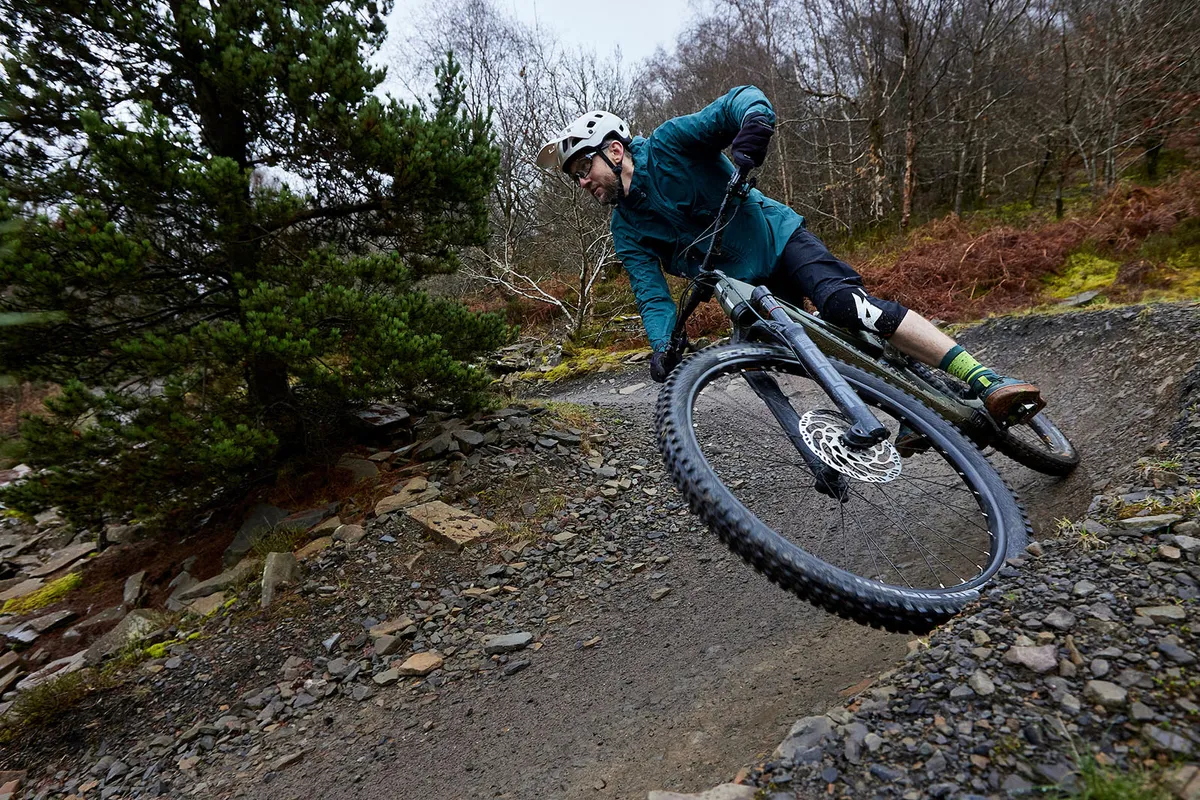
There’s also plenty of small-bump absorption, helping create calm when the trails are a sea of rough. In this respect, the Repeater is stable and controlled to ride even on super-gnarly terrain.
The suspension also makes light work of variable bump sizes, proficiently absorbing medium and big hits.
Tracking across rough terrain isn’t too taxing on the rider; the bike takes over, sticking on the line you’ve decided to take.
The rear shock’s tune is impressively effective, performing better than some more technologically advanced shocks in a wide range of places.
However, the rear shock tended to top out quite regularly. Coupled with the EP8’s freewheel rattle, the Repeater was loud on the descents.
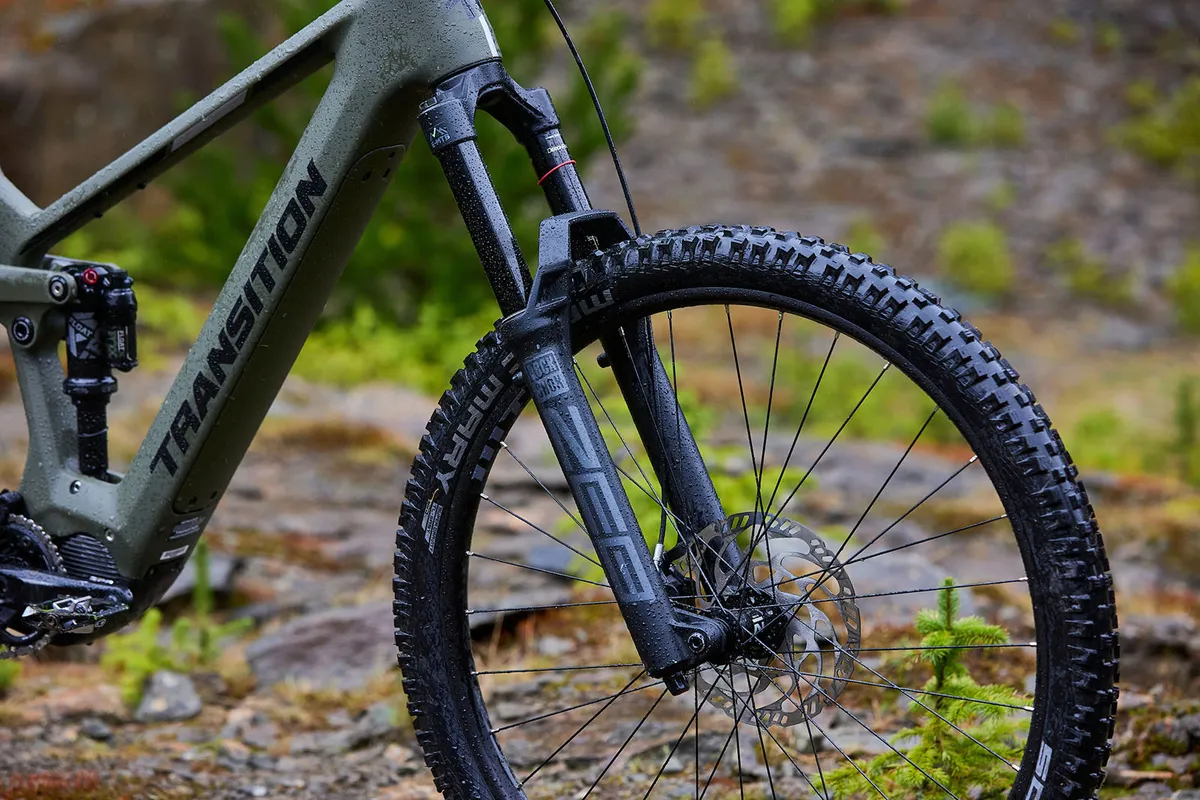
Its capability, however, gives it the demeanour of a longer-travel rig, but the pace you carry across this type of terrain shines a light on the fork’s lack of travel. A longer-travel fork would certainly help extend its capabilities further without upsetting the front-to-back balance.
According to Transition’s website, the Repeater is only compatible with forks with an axle-to-crown measurement of 576mm, precluding compatibility with all 170mm-travel ZEBs and 38s.
Schwalbe’s Magic Mary Ultra Soft compound tyre is impressively sticky regardless of terrain type. Its Super Gravity carcass is tough, responding better to lower pressures than an equivalent Maxxis offering. This is well suited to the extra weight of an ebike.
How does the Transition Repeater NX Carbon compare to the Specialized Turbo Levo Expert?
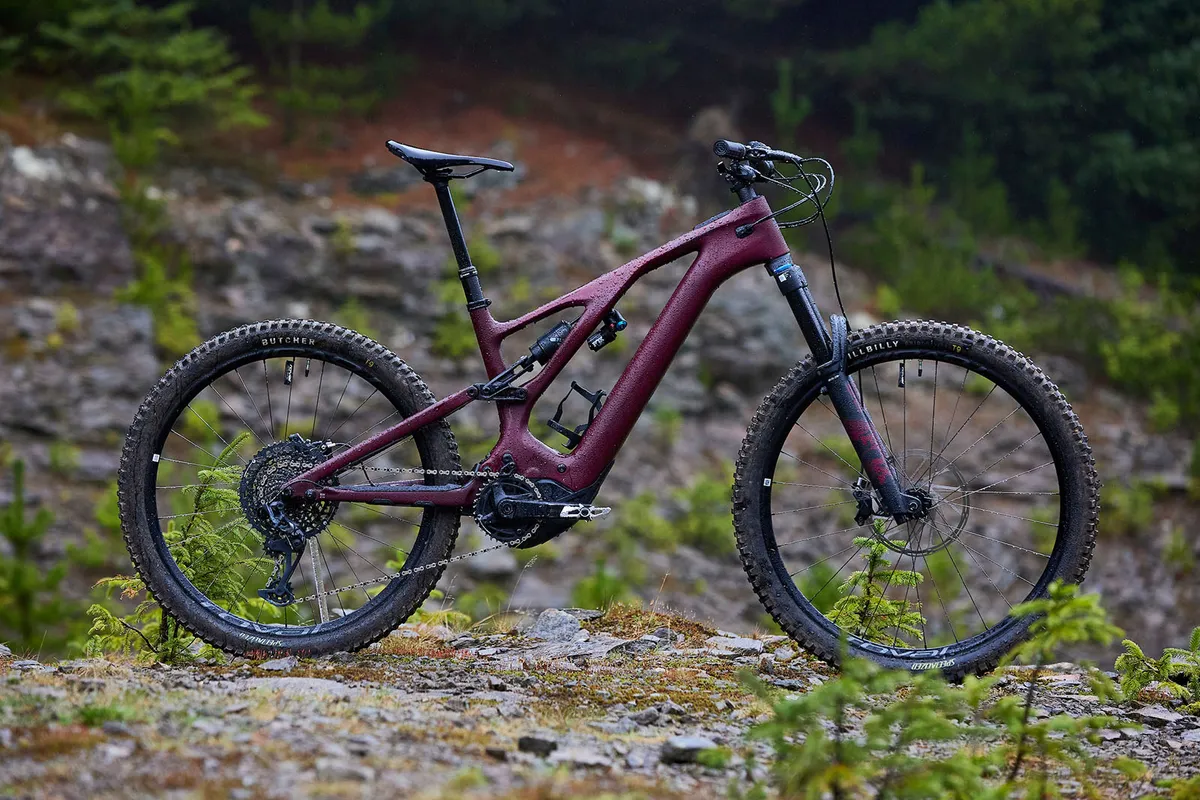
The Turbo Levo Expert costs just over £2,500 more than the Repeater and is fitted with Fox’s most sophisticated dampers, both front and back, along with a mix of SRAM’s GX and X0 Eagle drivetrain components.
Compared to the Transition’s NX Eagle drivetrain, the Specialized feels leagues ahead.
However, it’s trickier to discern a difference between the two bikes' dampers, despite the Transition’s basic Performance Float X. Clearly, Transition has worked hard to develop the shock’s tune, elevating performance.
Interestingly, it’s the same story with these two bikes' forks: both have 160mm of travel as standard, and both could do with more travel to match their frame’s performance potential. Once again, neither are compatible with longer-travel forks.
I preferred the roomier Turbo Levo on the descents, its balance between agility and stability trumping the Transition’s. The Repeater wasn’t unstable, but certainly felt quicker to react to rider inputs.
On the ups, the Transition is arguably comfier and easier to ride, thanks to its steeper seat tube angle. The Brose motor has more power than Shimano’s EP8 and has a five-year instead of a two-year warranty.
Both frames are made from carbon fibre, but the Turbo Levo has adjustable geometry, giving it chameleon-like abilities to shift personality from trail bike to enduro bike, something the Transition can’t do.
Transition Repeater NX Carbon bottom line
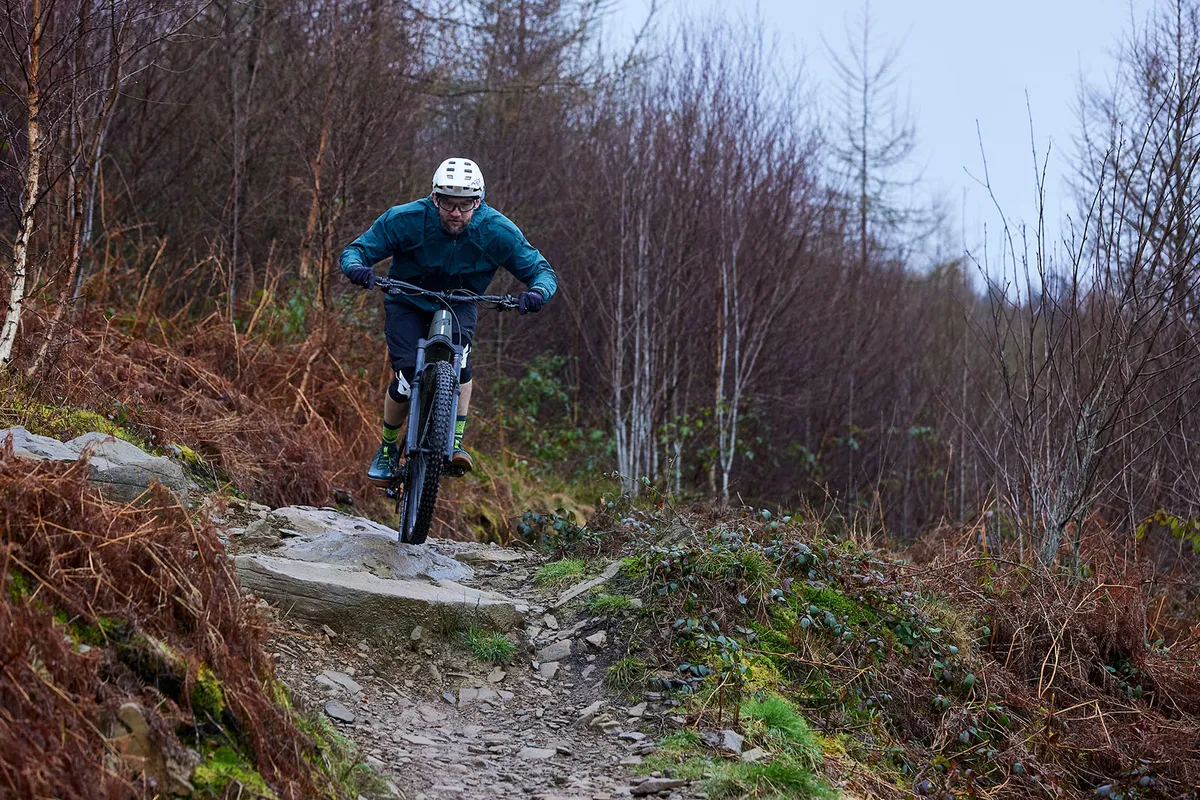
Transition’s Repeater NX Carbon excels on the ups; its supple suspension irons out the most jarring trail chatter, offering grip and comfort along the way.
Combined with a steep seat tube angle and long chainstays, few climbs are insurmountable. This makes it a total hoot to whip up the climbs.
Despite its long, slack and low geometry, going downhill the Repeater is much more responsive and flickable than you’d expect.
This makes it great fun to weave down tighter singletrack, and helps it hide its weight well.
Combine that geometry with ground-eating suspension and the only thing slowing the Repeater down is its 160mm-travel fork, but even that isn’t capping its performance significantly.
The NX drivetrain, while not refined, is adequately functional, and the rest of the Repeater’s spec is well considered. Value for money isn’t great, though, especially when you compare it to Nukeproof’s Megawatt.
Overall, there’s little to dislike about the Repeater, but it misses the mark in a few areas – namely fork travel and value – both preventing it from scoring higher.
eMTB Bike of the Year 2023 | How we tested
Full-power, high-performance, gravity-focused ebikes need to behave like mini-DH bikes on the descents, but provide a comfortable, brisk and efficient means to climb back up.
A gutsy motor will do the heavy lifting when ascending, but little can mitigate poor geometry, bad spec choices and sub-standard suspension.
When searching for your perfect full-power ebike, we recommend going big on travel (150mm plus), battery capacity (630Wh or more) and motor power (85Nm or above).
Spot-on geometry will improve both uphill and downhill performance; steep seat tube angles, mid-length chainstays and slack head angles are all desirable.
Senior technical editor Alex tested eight full-power eMTBs on his home trails in Scotland’s Tweed Valley, home to the UK’s round of the Enduro World Cup and the 2023 XC Olympic and Marathon World Championships.
Testing happened from November to late March, subjecting the bikes to some of the harshest weather conditions known.
The pedigree and scope of the terrain on his doorstep is second to none, helping Alex push our eight bikes to their limits. Riding them back-to-back separated the strong from the weak and finally, a winner was chosen.
Our 2023 eMTB Bike of the Year contenders
- Nukeproof Megawatt 297 RS
- Orbea Wild M-Team
- Pivot Shuttle LT 29 Ride SLX/XT
- Santa Cruz Bullit SS C
- Specialized Turbo Levo Expert
- Transition Repeater NX Carbon
- Trek Rail 9.8 XT Gen 3
- Whyte E-180 RSX Super Enduro
Thanks to…
Thanks to our sponsors Crankbrothers, FACOM Tools, MET helmets, Bluegrass Protection, Supernatural Dolceacqua, Le Shuttle and BikePark Wales for their support in making Bike of the Year happen.
Product
| Brand | Transition |
| Price | A$13999.00, £7500.00, $8199.00 |
| Weight | 23.11kg |
Features
| Fork | RockShox ZEB R, 160mm (6.3in) travel |
| Stem | Race Face Aeffect R, 40mm |
| Chain | SRAM NX Eagle |
| Frame | Carbon fibre, 160mm (6.3in) travel |
| Motor | Shimano EP8 motor, 630Wh Shimano battery, Shimano EM800 display, EM800-L switch |
| Tyres | Schwalbe Magic Mary Guper Gravity Ultra Soft 29x2.4in (f), Schwalbe Big Betty Guper Gravity Soft 29x2.4in (r) |
| Brakes | Magura MT5 HC1 levers, 203/203mm rotors |
| Cranks | Shimano EM600, 34t |
| Saddle | ANVL Forge |
| Wheels | Stans Flow D |
| Headset | Acros ICR |
| Shifter | SRAM NX Eagle single click |
| Cassette | SRAM NX Eagle, 10-50t |
| Seatpost | OneUp Dropper V2 (dropper) |
| Grips/tape | ODI Elite Flow Lock-On |
| Handlebar | Race Face Chester Alloy, 780mm |
| Rear shock | Fox Float X Performance |
| Available sizes | S, M, L, XL |
| Rear derailleur | SRAM NX Eagle (1x12) |
